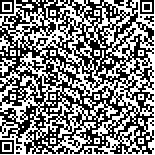| 摘要: |
| 光景学与声景学在研究背景与学术
特征上有许多相似之处。目前声景学科的研
究与实践已取得长足进展。声景学研究中某
些研究手法对光景学的研究有很好的启示。
“光景学”是一门高度综合交叉的学科,有
着丰富其的研究手段。“光景漫步”概念及
其研究方法的建立有一定的理论依据及可行
性,此理念曾被应用于广州花城广场光景研
究中,并在此基础上设计了光景漫步路线。由
于人的听觉感应与视觉感应之间存在差异,
“光景漫步”与“声景漫步”在应用的技术细
节上必然有其不同之处。完善和发展“光景
漫步”手段,并在光景学的研究和实践中广
泛应用,与“声景漫步”同成为探索环境的新
手段。 |
| 关键词: 光景学 声景漫步 光景漫步 漫步
路线 |
| DOI:10.13791/j.cnki.hsfwest.20210114 |
| 分类号: |
| 基金项目:中国科学院咨询课题(2018-ZW01-A-031) |
|
| Soundwalk and Lightwalk: Special Methods for Exploring Environment |
|
QIU Jianzhen,LI Yating,CHEN Jiayan
|
| Abstract: |
| At present, great progress has been made in the research and practice of soundscape.
It has become the most important research project in many countries and has great significance
in areas like inheriting historical culture and improving living environment. The research and
practice of soundscape has a rich variety of methods. In 1970s, Hildegard Westerkamp, one
of the main members and constructors of “world soundscape project”, organized a soundwalk
exercise at Queen Elizabeth Park Vancouver, and advocated people to recognize the typical
soundscape that were being neglected in the city, and re-sense the connection between human,
environment and nature. Today, half a century after the event, “soundwalk” is widely utilized
as one of the basic methods of soundscape research and expression, and has become a new way
of creation for artists from various areas.
“Lightscape” is a new area of study, with many similarities in research background and
academic characteristics with soundscape. They are both built on the subjective feeling of
people on “scape”, and emphasize on the sociality of human, and the effects of behaviors and
environmental psychology.
Even though sound and light have vastly different physical nature, studies of sound and
light share a great amount of similar academic characteristics. The development of soundscape
during the last fifty years as well as its rich research achievements will s urely bring much
beneficial enlightenment to the lightscape research. On the other hand, the “walking” as a
research method has strong interactivity and exploratory: one of its biggest characteristic is
that the participant also plays the role of a tool of research, and the feeling and experience
of the participant become part of its result. Therefore, it has its superiority in such an area
that focuses on the sensation of human. This demonstrates the theoretical foundation and
practicality of the “lightwalk” concept and its research method.
“Lightwalk” is defined as a way of exploring the designated area on foot with the purpose
and focus of enjoying the view of lightscape. It is a method where the participant actively
observing lightscape, with plans and organization. In addition to systematic questionnaire
and interviews, direct observation and behavior recording, it is also possible to use specific
technology to record the environment of the area, including photographing, video recording,
acquiring geometric information and obtaining related objective environmental indicators.The possible applications for “lightwalk” in the future are as followed: 1)as a investigation method for lightscape; 2)to evaluate the
lightscape quality for specific area; 3)as a design method for lightscape; 4)to cumulate data and information for future researches of lightscape,
and provide foundation for building lightscape database; 5) to put forward new research projects of the lightscape discipline.
The concept of “lightwalk” was utilized in the lightscape research at Guangzhou Huacheng Square, and a “lightwalking route” was built
on this foundation. Huacheng Square is regarded as the “city living room” for Guangzhou, and has much lightscape resource. The research
investigates on field to find out the popular lightscape in the order of popularity during day times and night times, as well as ordering by
characteristic lightscape, and form a linear viewing route consists of both natural and artificial lightscape. Through the guidance of the
“lightwalking route”, some important lightscape that had been neglected are emphasized, and the participant of the walk can experience a more
complete and rich landscape system. Lightwalking route like this can be further built into a guide map for city lightscape, and enable a new form
of city environment exploration.
There are certain differences and similarities in terms of technical details for “lightwalk” and “soundwalk”. In terms of whether the walk
is conducted in a group or by individual, the place and goal, whether or not to have assigned guide and how to choose the guide, both of them do
not have an essential difference; their difference is that sound can affect it listener in a certain distance, and the listening part of soundwalk can
be designed to be in a certain area or a point, yet its direction is not unique and will not affect the result too much; however, for lightscape, the
experience of viewing from different angles and directions varies greatly, and the limitation for the best position of appreciation are more limited.
This article briefly summarizes the development progress of soundwalk and its current application status in research and practice, and
compares with soundscape and ligthscape in terms of subject background and academic characteristic. Furthermore, it puts forward the notion of
“lightwalk”, and advocates to make it a method of lightscape subject study and practice. The goal is completing and developing the methods of
lightwalk and widely applying it in the lightscape subject study, making it the new method of exploring environment like soundwalk. |
| Key words: Lightscape Soundwalk Lightwalk Lightwalking Route |


